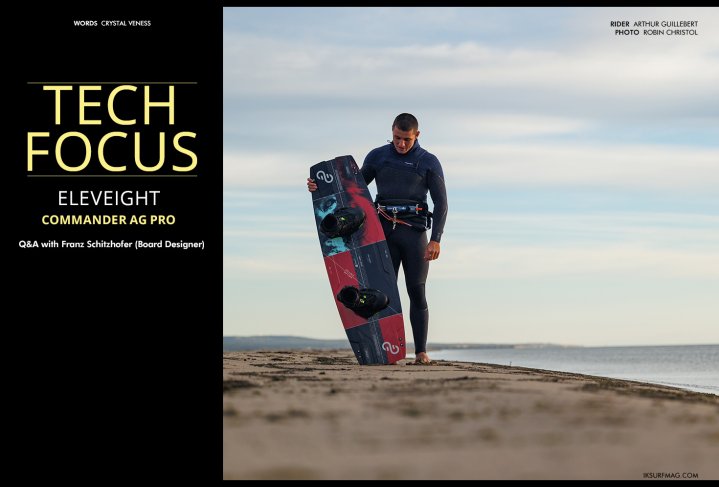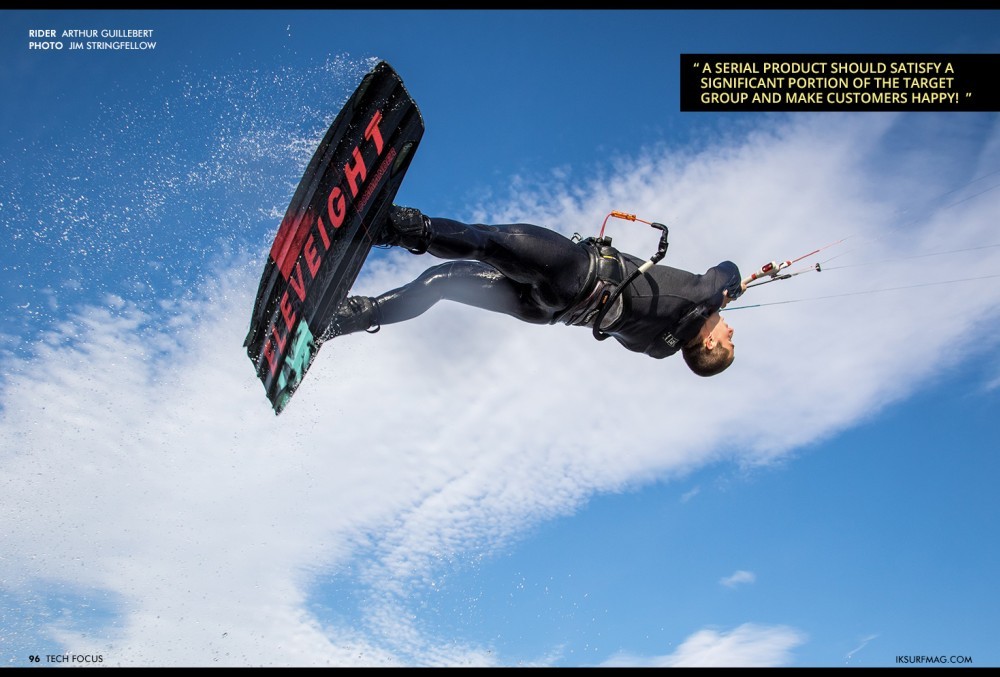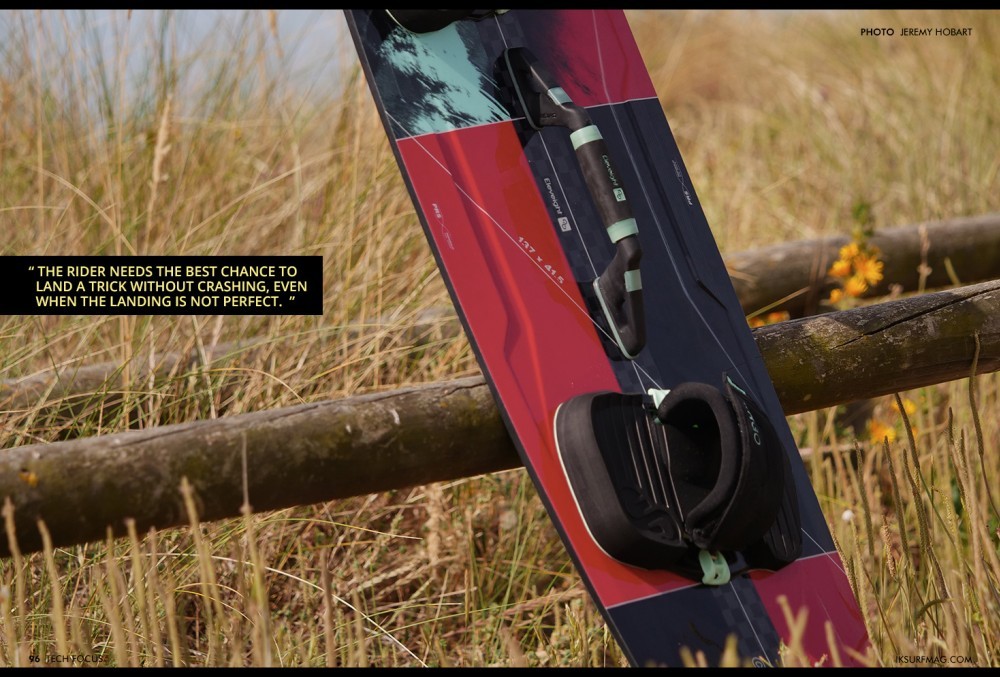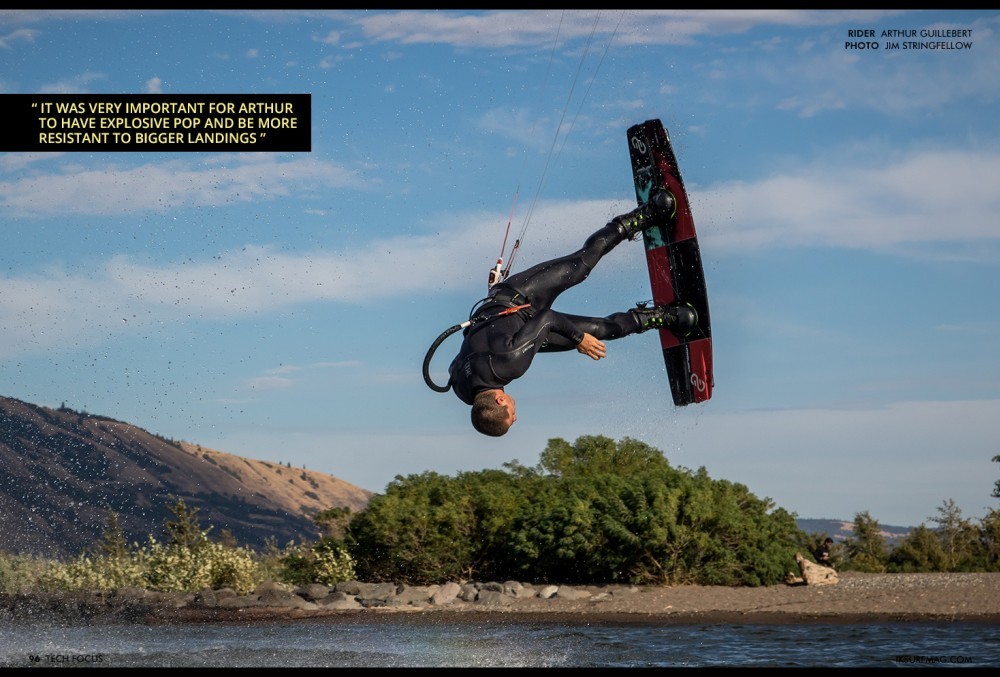
Tech Focus: Eleveight Commander AG Pro
Issue 96 / Thu 15th Dec, 2022
It takes immense talent and dedication to win a World Championship, but equipment you can rely on plays an important role. In this Q&A, we find out what went into Arthur Guillebert’s Eleveight Commander AG Pro Model, the board ridden by the World Champion himself!
Hey Franz! First things first, tell us about your background in watersports.
I started windsurfing back in 1980, and in 1983 I went on to shape boards under the label DYNAMIT. I've shaped more than 3,000 windsurf boards since then and continued to be an enthusiastic windsurfer until the year 2000. In 2001, my son Michael was competing in the PKRA and told me that "windsurfing is only for old people!" so I took note, not wanting to seem old, and my whole family started kitesurfing. Due to natural progression, I swiftly turned to shaping kiteboards instead!
How did you become a board designer, and what inspires your designs?
After shaping a lot of kiteboards for family and friends, in 2008, I had the opportunity to work at Atomic (a famous Austrian ski brand). I learnt a lot about product management and industrialisation. There's a massive difference between shaping boards in a garage and managing a project from zero to a manufactured board with a serial number! At Atomic and later at Elan (another well-known ski and snowboard manufacturer), I was able to help realise shapes for brands like JN, Best, F-One, Core, Blade, Brunotti, Wainman, Flexifoil and, of course, Eleveight.
As I'm still an enthusiastic kiteboarder, my designs are inspired by performance, with the main focus on easy use and a lot of fun on the water! I prefer simple, efficient and clean lines. A serial product should satisfy a significant portion of the target group and make customers happy! Simple lines work perfectly, especially for freeriding products.
The Commander AG Pro is the board of choice and pro model of World Champion Arthur Guillebert. With a Commander V4 already in the lineup, how does the new Commander AG Pro fit in?
Haha…. The AG Pro Model is precisely the opposite of simple. It's a freestyle board - focused on extremes. A competition board has another focus than, for example, a freeride board. It's used in stronger winds by experienced freestyle riders with well-powered kites. And obviously, it's the performance that counts!
What characteristics does a board need to make it a high-performance freestyle machine?
First, it needs to have an easy, accessible and massive POP! And second: POP!! Next is upwind ability, as the rider needs to come back fast in the competition box when performing many massive tricks and landing downwind. But another detail of similar importance is the need for easy landings without losing speed. The rider needs the best chance to land a trick without crashing, even when the landing is not perfect. In competition, it's obvious: when you crash or even buttcheck, you lose massive points, and maybe you'll be kicked out of the comp! I travelled for seven years around the globe with my son and watched countless PKRA events. I guess I know what's important… 😉
What are the key differences between the Commander and the Commander AG Pro? Are the differences mainly in the construction or also in shape?
The main difference is the construction and setup for the rocker and flex, the main criteria that take a board from good to a real magic stick. The setup is done over small tweaks on the outline, the Paulownia wood core's thickness profile, and the factory's press parameters! The setup is the most sophisticated detail in the R&D process, and this needs experience and patience. And it requires a lot of testing on the water!
Construction-wise, the AG Pro Model has more and different spread tow Carbon layers and reinforcements. It also has a different wood core profile and new composite Phenol rails. These key elements mean the setup is much stiffer than the Commander, and it has been adapted to the power and demands of Arthur. In short, it's much more dynamic.
Did Arthur play a big part in the R&D process of his pro model? How was it working together?
Yes, Arthur had very concrete ideas about the performance and design, and he gave detailed feedback on prototypes and suggested improvements - that's a significant difference from the normal process and a testament to his professionalism!
Arthur rides with a lot of power and, we imagine, puts a lot of pressure on his gear! What reinforcements does this board have to keep it in one piece?
As mentioned above, there is additional Carbon plus the new Phenolic rails, but there are no 'special' reinforcements as such for Arthur. He is a rider with a lot of power, but he also has a lot of control. Arthur is one of the guys who doesn't leave his brain on the beach and knows when it's senseless to try risky landings. In other words, it's very seldom that Arthur damages something!
While we're sure the competition results speak for themselves, what does Arthur have to say about his board?
We've known each other for a while, and Arthur is aware I have a complete understanding of the needs of a pro athlete. He was very excited to create his pro model, which every rider dreams about. As we developed the board, it was very important for Arthur to have explosive pop and be more resistant to bigger landings, perfect for big freestyle tricks. As soon as Arthur received the first prototype, he could instantly feel the difference in construction, and it made a big difference to his riding. He got to choose the graphics, too, and I know he feels great to showcase his name on an official pro product.
What do you think of the final result? Have you or your son had a chance to throw some freestyle moves on it?
I spent two weeks in September with my son in Greece. To be honest, the AG Pro Model is NOT a difficult board! Every rider with some basic experience can ride it and will be surprised about its upwind ability and how easily accessible it is! But the AG Pro Model has two personalities: it will start to get serious when the wind picks up and when the kite gets overpowered…
Videos
By IKSURFMAG












